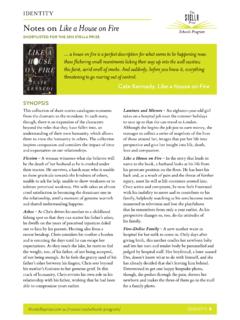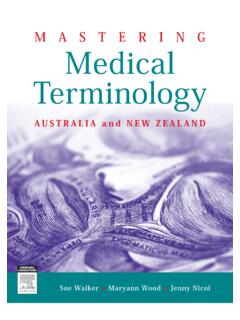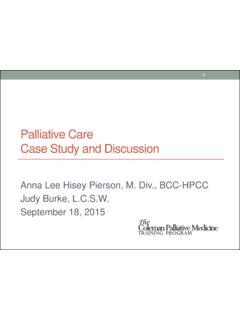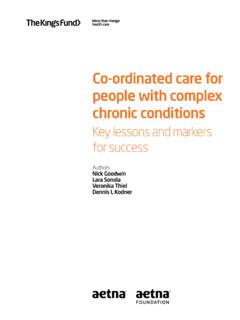Transcription of FOURTH EDITION Australia Elsevier - Booktopia
1 FOURTH EDITION medical surgical nursingLewis sDi Brown Helen Edwards Lesley Seaton Thomas BuckleySharon L. LewisShannon Ruff DirksenMargaret McLean HeitkemperLinda BucherAssessment and Management of Clinical Problems Australia and New Zealand EDITION sample proofs @ Elsevier AustraliaCHAPTER 30 FOURTH EDITION medical surgical nursingLewis sAssessment and Management of Clinical Problems Australia and New Zealand EDITION Sydney Edinburgh London New York Philadelphia St Louis TorontoEDITED BYDi Brown RN, PhD, MACN, AFCHSMP roject Director, Sister Hospital Program, Royal Darwin Hospital, Darwin, NT, Australia and RSUP Sanglah, Denpasar, Bali, IndonesiaProfessorial Fellow, Charles Darwin University, Brinkin, NT, AustraliaHelen Edwards RN, PhD, FACN, FAAN, OAMP rofessor and Assistant Dean (International and Engagement)
2 , Institute of Biomedical Innovation, Queensland University of Technology, Brisbane, Qld, AustraliaLesley Seaton PhD, MN, BN, Grad Dip Adult Education, Dip Midwifery, ICcert, RNSenior Lecturer and Program Director (International), School of Nursing and Midwifery, Griffith University, Brisbane, Qld, AustraliaAdjunct Associate Professor, School of Health Sciences, Canterbury University, Christchurch, New ZealandThomas Buckley RN, BSc, MN, PhDSenior Lecturer/Co-ordinator Master of Nursing (Clinical Nursing & Nurse Practitioner), Sydney Nursing School, The University of Sydney, Sydney, NSW, AustraliaAdjunct Associate Professor, School of Health and Human Sciences, Southern Cross University, Lismore, NSW, AustraliaSharon L LewisShannon Ruff DirksenMargaret McLean HeitkemperLinda Buchersample proofs @ Elsevier AustraliaCHAPTER 30 ContentsSECTION 1 Concepts in nursing practice 1 The importance of nursing 2 2 Patient safety and clinical reasoning: Thinking like a nurse 21 3 Health disparities and cultural care 32 4 Pain management 48 5 palliative care 81 6 Substance use and dependency 97 7 Rural and remote area nursing 125 SECTION 2 Pathophysiological mechanisms of disease 8 Nursing management: Inflammation and wound healing 144 9 Genetics and genomics 164 10 Altered immune responses and transplantation 176 11 Nursing management.
3 Infection and human immunodeficiency virus infection 200 12 Cancer 223 13 Nursing management: Fluid, electrolyte and acid base imbalances 262 SECTION 3 Perioperative care 14 Nursing management: Preoperative care 294 15 Nursing management: Intraoperative care 312 16 Nursing management: Postoperative care 330 SECTION 4 Problems related to altered sensory input 17 Nursing assessment: Visual and auditory systems 356 18 Nursing management: Visual and auditory problems 375 19 Nursing assessment: Integumentary system 411 20 Nursing management: Integumentary problems 425 21 Nursing management: Burns 449 SECTION 5 Problems of oxygenation: Ventilation 22 Nursing assessment: Respiratory system 476 23 Nursing management: Upper respiratory problems 500 24 Nursing management: Lower respiratory problems 524 25 Nursing management: Obstructive pulmonary diseases 564 SECTION 6 Problems of oxygenation: Transport 26 Nursing assessment: Haematological system 616 27 Nursing management: Haematological problems 637 SECTION 7 Problems of oxygenation: Perfusion 28 Nursing assessment: Cardiovascular system 692 29 Nursing management: Hypertension 716 30 Nursing management: Coronary artery disease and acute coronary syndrome 737 31 Nursing management: Heart failure 775 32 Nursing management: ECG monitoring and arrhythmias 796 33 Nursing management: Inflammatory and structural heart disorders 820 34 Nursing management: Vascular disorders 843 SECTION 8 Problems of ingestion, digestion, absorption and elimination 35 Nursing assessment: Gastrointestinal system 876 36 Nursing management: Nutritional problems 900 37 Nursing management: Obesity 921 38 Nursing management.
4 Upper gastrointestinal problems 941sample proofs @ Elsevier AustraliaCHAPTER 30 39 Nursing management: Lower gastrointestinal problems 978 40 Nursing management: Liver, pancreas and biliary tract problems 1024 SECTION 9 Problems of urinary function 41 Nursing assessment: Urinary system 1066 42 Nursing management: Renal and urological problems 1086 43 Nursing management: Acute kidney injury and chronic kidney disease 1124 SECTION 10 Problems related to regulatory and reproductive mechanisms 44 Nursing assessment: Endocrine system 1160 45 Nursing management: Diabetes mellitus 1181 46 Nursing management: Endocrine problems 1221 47 Nursing assessment: Reproductive system 1250 48 Nursing management: Breast disorders 1272 49 Nursing management: Sexually transmitted infections 1298 50 Nursing management: Female reproductive problems 1315 51 Nursing management: Male reproductive problems 1348 SECTION 11 Problems related to movement and coordination 52 Nursing assessment: Nervous system 1376 53 Nursing management: Acute intracranial problems 1404 54 Nursing management: The patient with a stroke 1436 55 Nursing management: Chronic neurological problems 1459 56 Nursing management: Delirium, depression and dementia 1492 57 Nursing management: Peripheral nerve and spinal cord problems 1517 58 Nursing assessment: Musculoskeletal system 1546 59 Nursing management: Musculoskeletal trauma and orthopaedic surgery 1566 60 Nursing management: Musculoskeletal problems 1605 61 Nursing management: Arthritis and connective tissue diseases 1630 SECTION 12 Nursing care in specialised settings 62 Nursing management.
5 Critical care environment 1670 63 Nursing management: Shock, systemic inflammatory response syndrome and multiple organ dysfunction syndrome 1706 64 Nursing management: Respiratory failure and acute respiratory distress syndrome 1730 65 Nursing management: Emergency care situations 1751 66 Chronic illness and complex care 1780 APPENDICES A Cardiopulmonary resuscitation and basic life support 1795 B Nursing diagnoses 1801 C Answer key to review questions 1803 D Image and text credits 1805 Index 1817sample proofs @ Elsevier AustraliaxxiPrefaceThe FOURTH Australian and New Zealand (ANZ) EDITION of Lewis s Medical Surgical Nursing: Assessment and Management of Clinical Problems builds on the combined strengths of the third ANZ EDITION and the ninth US EDITION . It has been written to address the needs of ANZ students and educators. Professors Di Brown and Helen Edwards, and Drs Lesley Seaton and Tom Buckley, led a team of nurse clinicians and academic contributors from across ANZ to develop this cutting-edge FOURTH EDITION has been thoroughly revised and incorporates the most recent nursing knowledge in an engaging and reader-friendly format.
6 More than a textbook, this is a comprehensive resource containing essential information that students need in order to prepare for lectures, classroom activities, examinations, clinical assignments and the professional care of patients. In addition to its accessible writing style and quality illustrations, the text provides special features such as evidence-based practice boxes, review questions and clinical reasoning exercises to facilitate student learning. Recurring topics include patient teaching guides, gerontological advice, management of chronic diseases, multidisciplinary care , cultural and ethnic considerations, nutrition, community- and home-based care , and nursing use of the nursing process as an organising frame-work for nursing practice has been retained and new content has been added to reflect rapid changes in practice. Contributors have been selected for their expertise in specific areas, and clinical specialists have thoroughly reviewed each chapter to ensure accuracy, currency and regional relevance.
7 From the outset, the text firmly establishes the ANZ sociocultural context and includes, for example, a chapter on current national patient safety priorities in ANZ (Ch 2), current information on rural and remote area nursing (Ch 7), as well as a framework for the management of chronic and complex conditions (Ch 66). In addition, this EDITION includes chapters on contemporary health issues such as obesity (Ch 37) and emergency and disaster nursing (Ch 65).OrganisationThe content is organised into 12 sections. Section 1 (Chs 1 7) introduces key healthcare concepts within Australia and New Zealand. Sections 2 12 (Chs 8 66) present nursing assessment and nursing management of medical and surgical patient problems both within acute care settings and within the community. The focus of each section is across the whole trajectory of healthcare, including health promotion, risk assessment, management of acute and chronic conditions, and the various nursing roles and responsibilities, as well as the roles of the whole multidisciplinary healthcare team.
8 The various body systems are grouped to reflect their interrelated functions. Each section is organised around two central themes: assessment and management. Chapters dealing with assessment of a body system include a discussion of the following:1. a brief review of anatomy and physiology, focusing on information that will promote an understanding of nursing care2. health history and non-invasive physical assessment skills to expand the knowledge base on which decisions are made 3. common diagnostic studies, expected results and related nursing responsibilities to provide easily accessible chapters focus on the pathophysiology, signs and symptoms, diagnostic study results, multidisciplinary care and nursing management of various diseases and disorders. The sections on nursing management are organised into assessment, identification of priority care problems, planning, implementation and evaluation.
9 To emphasise the importance of patient care in various clinical settings, nursing implementation of all major health problems is organised by the following levels of care :1. health promotion2. acute intervention3. ambulatory and community/home features Critical thinking, clinical judgement and clinical reasoning (introduced in Ch 2) provide a framework to enable students to think about patient situations effectively. The use of multiple case studies at the end of each section enables students to practise prioritising care between a number of different patients. The multiple case studies and the individual ones in the assessment and management chapters are structured so that students need to use their clinical reasoning and judgement skills to plan and outline care priorities. Key delegation decisions are included to enable the student to begin to more clearly understand the responsibilities of the registered nurse.
10 National patient safety goals for both New Zealand and Australia are introduced in the new Chapter 2 of the text, which are then addressed in more detail in relevant chapters throughout the text. Important patient safety information such as drug interactions are highlighted within specific chapters. Key epidemiological information is provided to enable students to understand the incidence and prevalence of the various conditions in the Australian and New Zealand context. Priority care problems outlined in each of the management chapters illustrate the multidisciplinary nature of contemporary healthcare. Multidisciplinary care is further highlighted in special multidisciplinary care sections in all management chapters and more than 80 multidisciplinary care boxes and tables throughout the text. The whole trajectory of care is included. Chapters include prevention and health promotion, through the sample proofs @ Elsevier Australia xxii PREFACE Nursing assessment tables summarise the key subjective and objective data related to common diseases.






